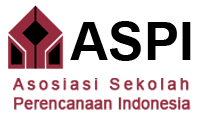The name of “Desa-Kota” is inspired by the terminology desakota from a research conducted by Terry McGee on urbanization in Southeast Asia. McGee’s research about urbanization in Southeast Asia was began in the 1960s, taking Malaysia, Vietnam, and Indonesia as his cases of study. His research focused on the debate about the presence of a rural-urban dichotomy in the phenomenon of urbanization. Related to this research, McGee published the book of “Southeast Asian city: A social geography of the primate cities of Southeast Asia” in 1968, followed by the book of “The Urbanization Process in the Third World” in 1971. McGee argues that for the context of Urbanization in Southeast Asian region, there are zones in which urban and rural area mixed with blurred characters, forming a continues rural urban area called desakota. The terminology desakota itself was first published in the book titled 'The Extended Metropolis: Settlement transition in Asia' in 1991, where McGee wrote together with Norton. N. Ginsburg. More specifically, this terminology refers to the environment that is between primate cities in Asia which shows a mixed character between rural and urban areas, so that the conditions of the physical environment and socio-economic activities are not able to show a clear difference between urban and rural areas. This is due to the continuous mixing and change of urban and rural characters. The unique character presented by this terminology for urbanization in Asia, became the inspiration for the name of the journal Desa-Kota of Urban and Regional Planning Program, Universitas Sebelas Maret.












